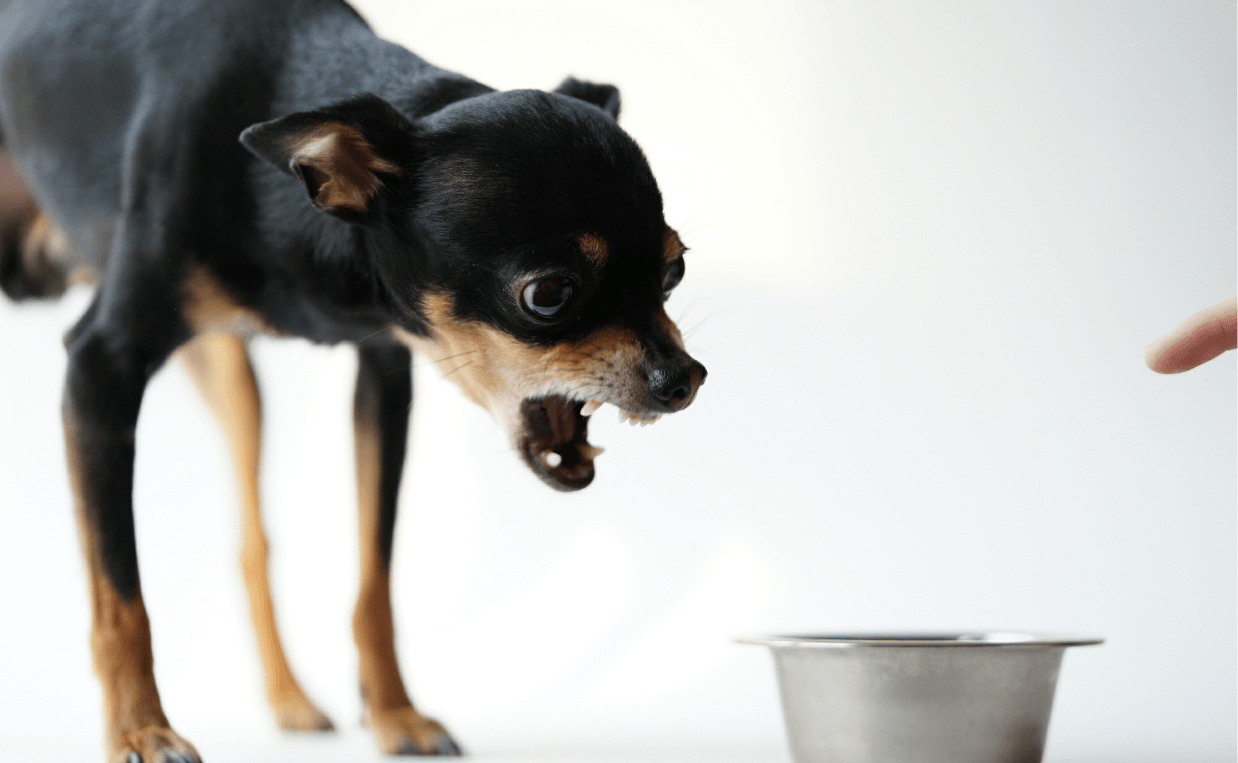
Guarding food, possessions or territory is normal behavior in dogs. Wild animals who successfully protect their resources are more likely to survive than those who don’t. However, many pet parents find the tendency to guard valued items undesirable in our domesticated pets, especially when the behavior is directed toward people.
What is Canine Food Guarding?
Generally, we refer to food guarding in dogs as growling, lunging and even biting if someone approaches a dog’s food bowl or even food on a table or counter in a dog’s home.
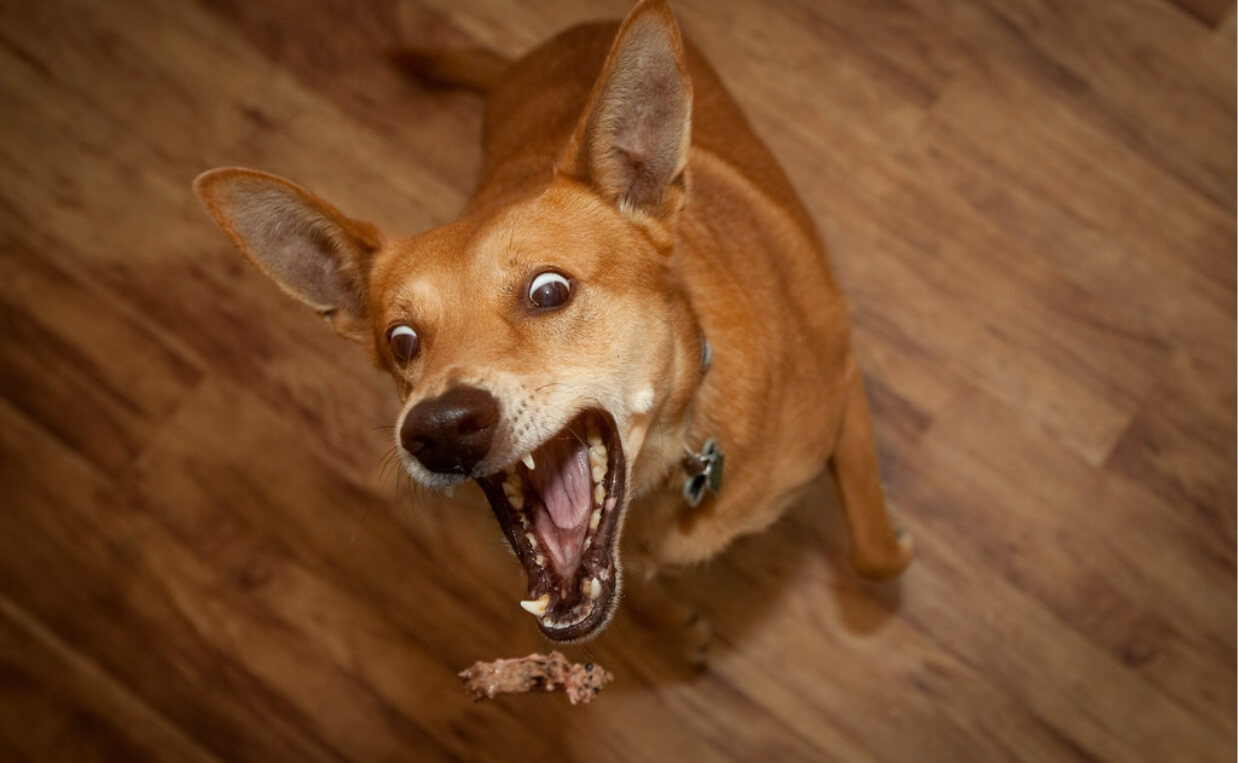
Dogs who display food guarding behavior generally become protective or even aggressive to maintain possession of their food or treats. The aggression can be directed at other animals or people. Typically, a dog with food guarding tendencies may stiffen, raise its hackles or growl when another dog or person approaches the food. Commonly, we see dogs who are food guarding take their food into another room or try to defend their territory by snapping or even biting.
Food guarding is a type of resource guarding. In addition to food, you may see dogs displaying this type of behavior around their toys, bones or other “high-value” items. It is a normal behavior in wolves, coyotes and other canids who must compete for limited food in the wild. However, this type of behavior can be downright dangerous in a regular household, especially one with small children.
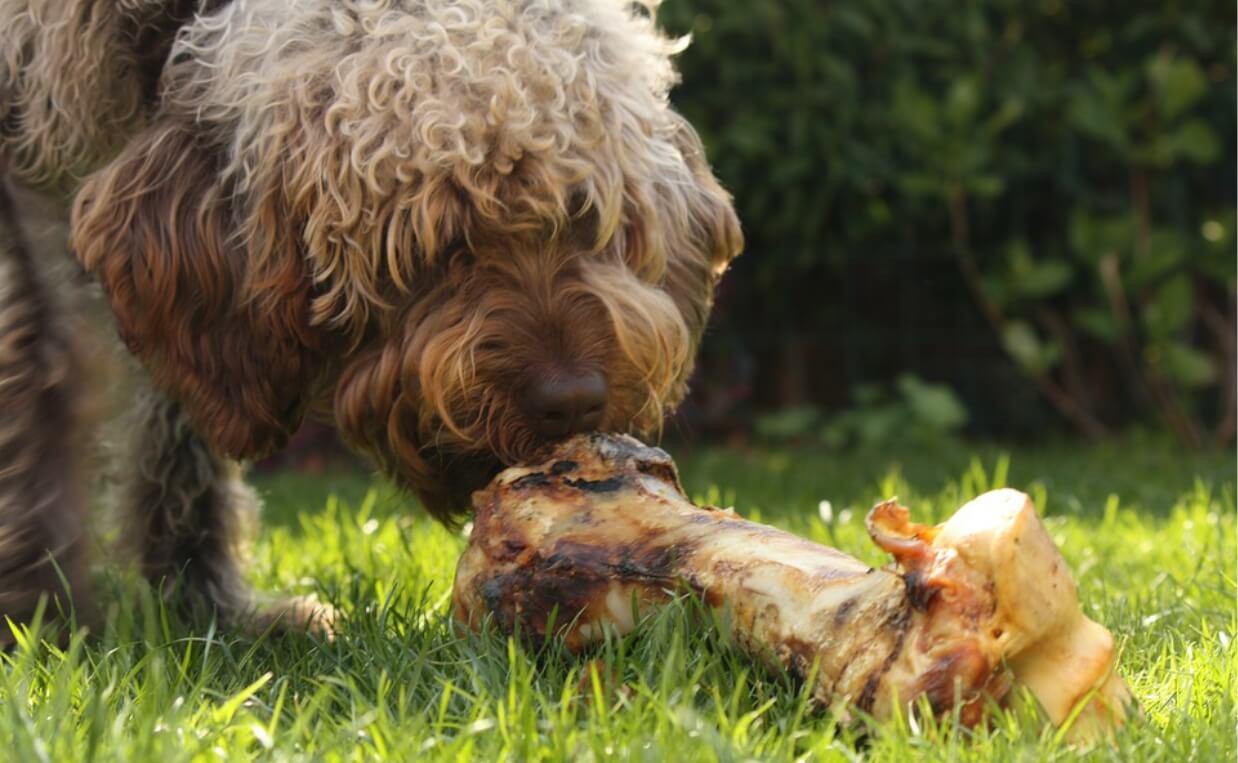
What Causes Food Guarding?
Most canine behaviorists think food guarding is a combination of genetics, temperament, early experiences during puppyhood and learned behaviors. Some think this type of behavior can result when a puppy’s entire litter was fed out of one bowl and puppies had to compete for food.
However, some dogs will growl if they have a medical condition that causes pain when eating, such as a broken tooth or arthritis. Other medical conditions that increase appetite or thirst may cause dogs to be aggressive around their bowls, too. That’s why it’s important to ask your veterinarian to rule out medical causes first, because resolution of a painful condition may, in turn, eliminate the food guarding.
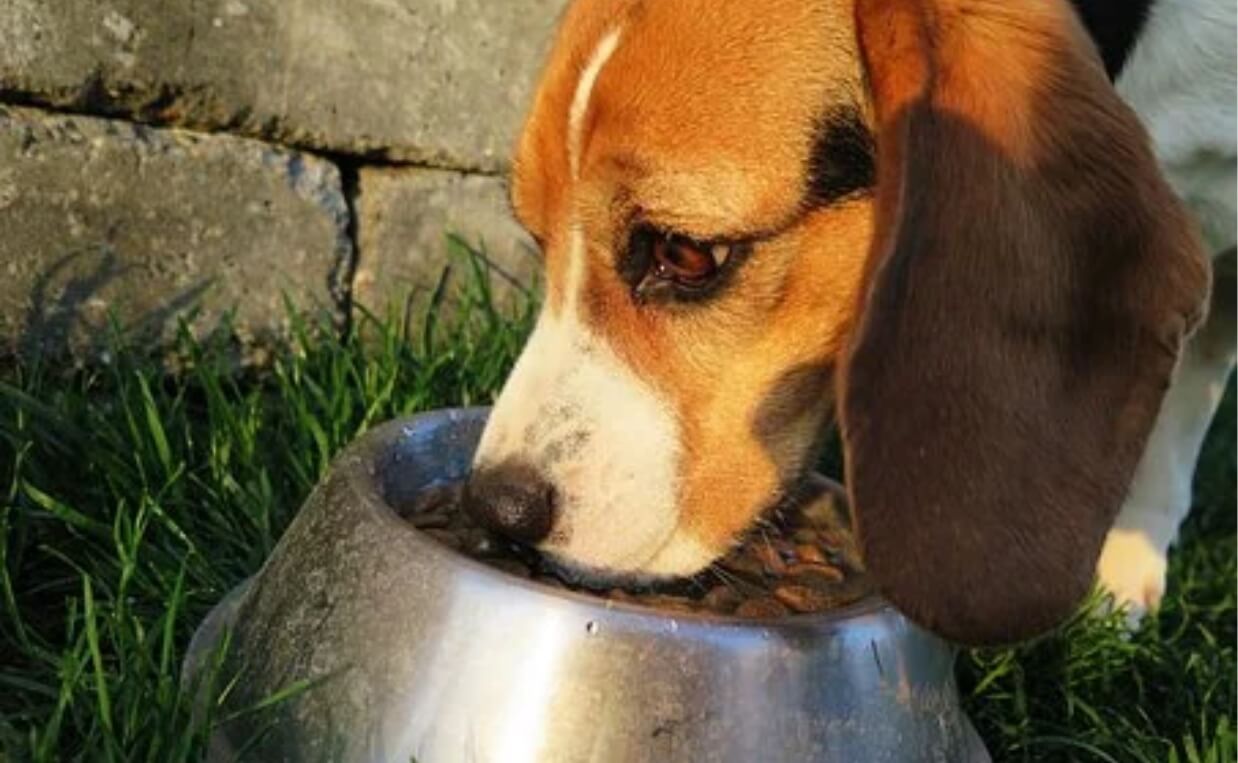
What NOT To Do
If your dog shows signs of food aggression, it’s really important that you don’t punish your dog or grab the food bowl away. If anything, those actions will escalate your dog’s anxiety, fear and aggression. Sometimes, these types of reactions will cause a dog to start guarding other items in an effort to maintain control.
On the other hand, retreating when your dog exhibits food guarding may reinforce the behavior. If your dog shows this type of aggression, consider working with a trained, experienced professional trainer.
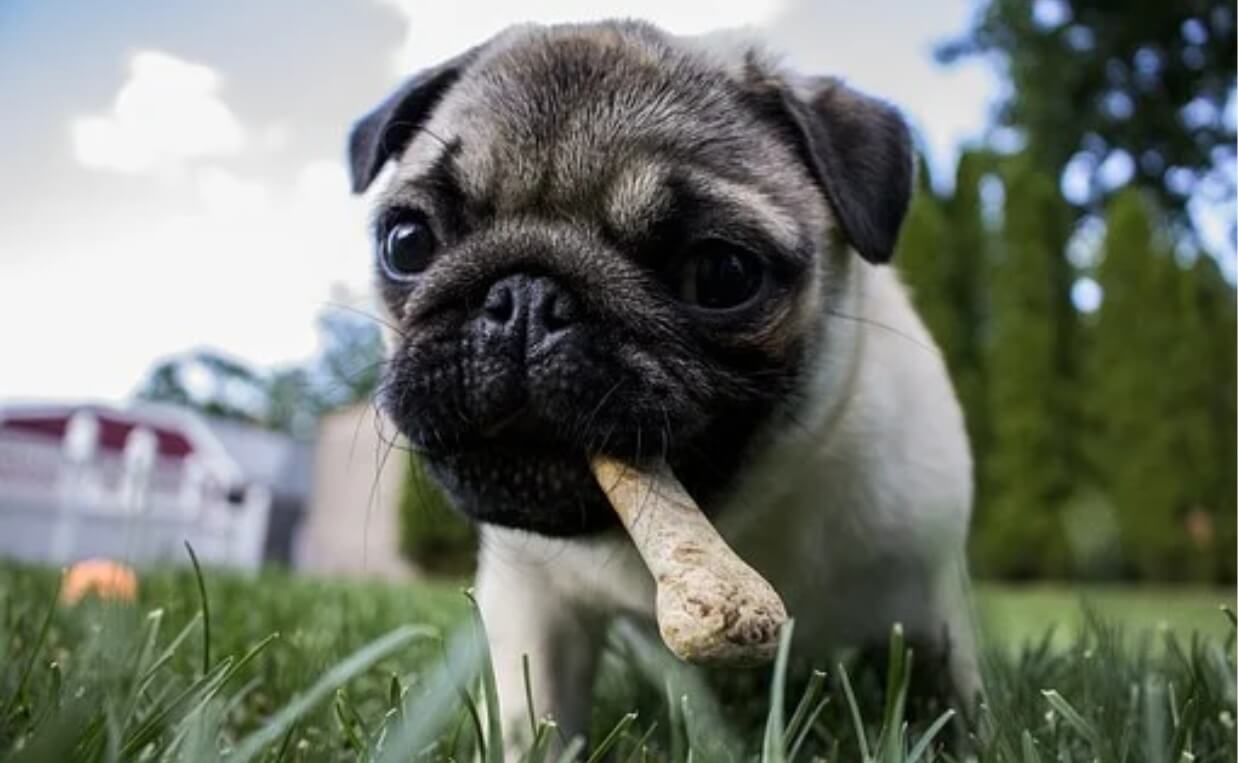
How to Change Food Guarding Behaviors
Here are four ways to address your dog’s food guarding aggression.
- Start by visiting your veterinarian to rule out any medical conditions that may be contributing to the issue.
- If the behavior is relatively mild, you can try putting your dog in a separate room, away from other pets, children or adults while he or she eats. Sometimes, if a dog is fed consistently in a non-threatening environment, it may help reduce the motivation to be aggressive.
- Work on teaching your dog to be calm around food by desensitization and counter-conditioning. Just be sure you are not in danger when you try this. The goal is to teach your dog it can be a positive experience when you are near the food bowl because you offer an even more delectable treat.
- Start by standing a few feet away and speak in a conversational tone. Every so often toss your dog a special treat, like hot dog pieces. Do this at every meal for a week.
- The next step is to take a step towards the food bowl, drop the treat, and then step back. Gradually move closer to the bowl and drop a treat in the bowl while the dog is eating.
- If your dog tolerates this, gradually move close enough to offer a treat from your hand while the dog is eating.
- As long as your dog doesn’t seem anxious, you can gradually move to touching the bowl with one hand while offering a treat with the other. Eventually, try lifting the bowl while offering the treat.
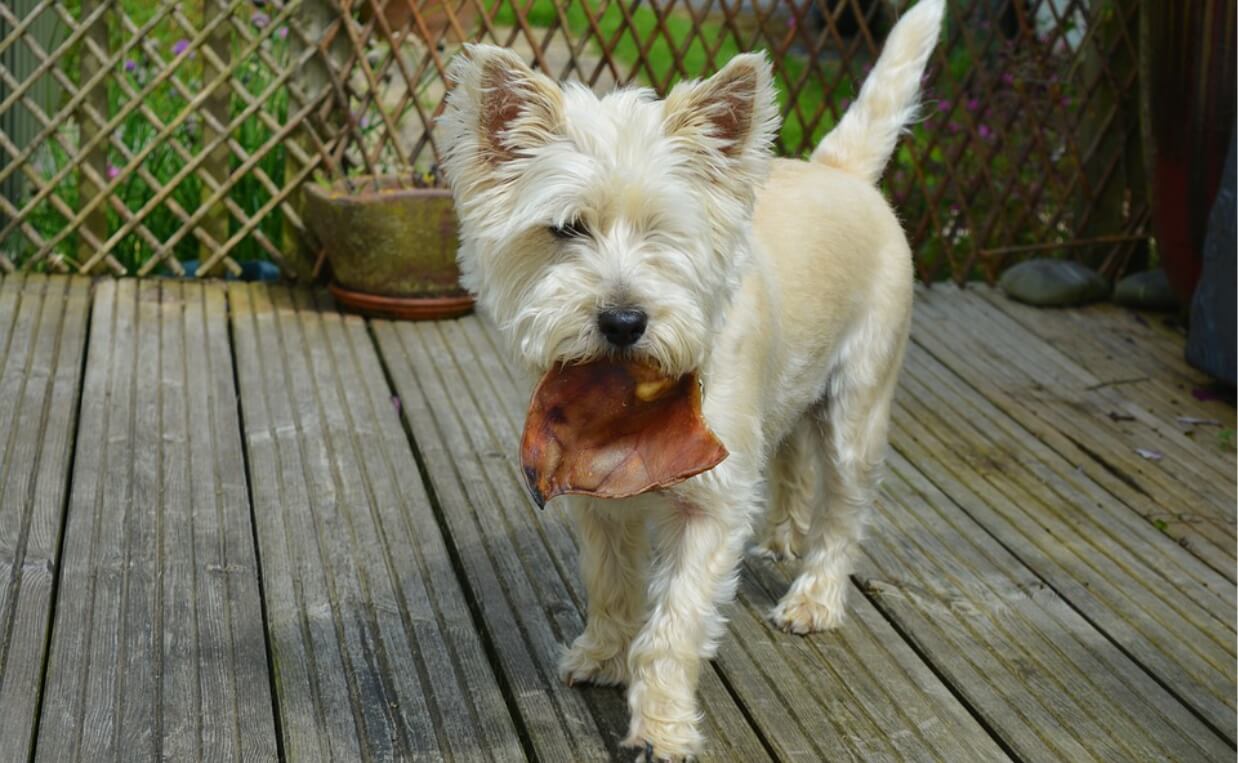
- In severe cases, your veterinarian may recommend medications to help reduce your dog’s anxiety. Even so, food guarding may not ever be completely cured, but most of the time it can be managed.
The good news is when your dog is less anxious about guarding his or her food bowl, it will help you relax too, which is good for both of you!
If your dog is experiencing behavior issues or you would like him or her to learn better behavior skills, consider enrolling in the Canine Campus Dog Training Program. Our trainer, Patti Davieau, is a Master Trainer. She has earned many certifications and awards over her 30-year career; we are really lucky to have her on-board! Patti offers on-site training classes, making it very convenient for Canine Campus families. Click here to learn more or speak with a Campus Supervisor for more information.
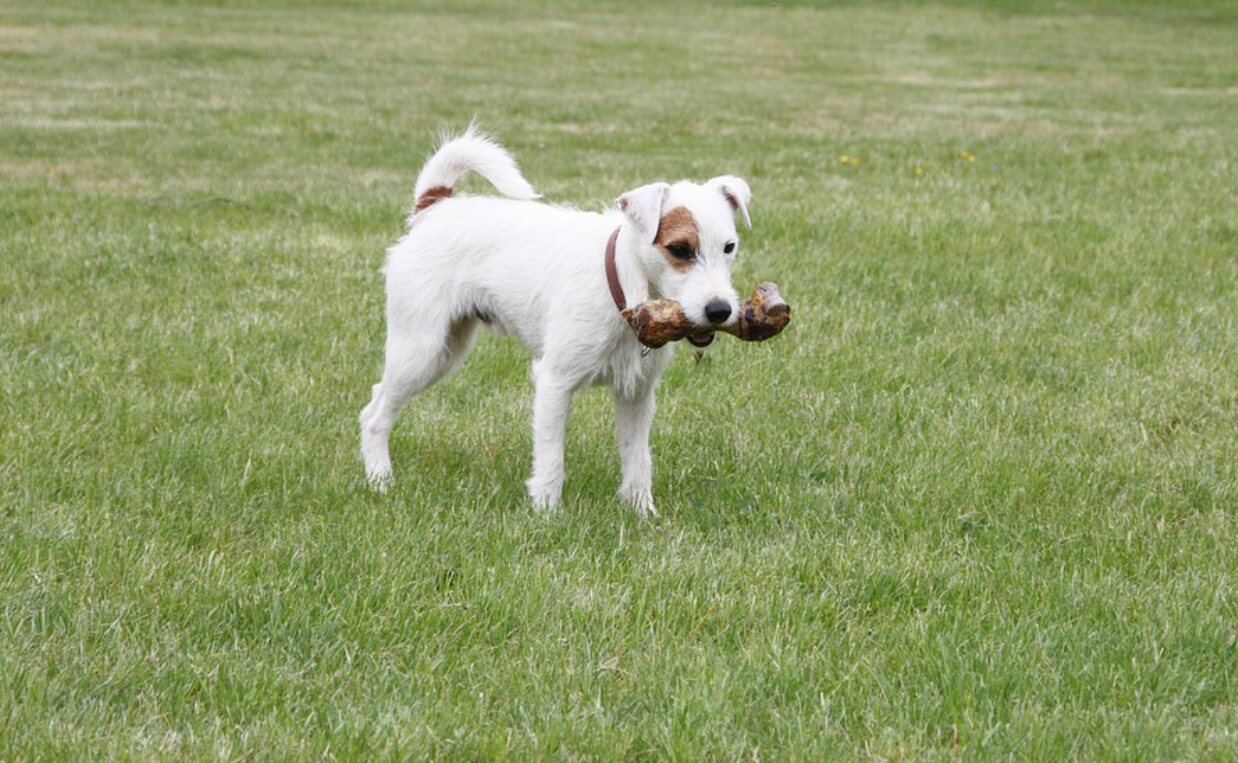
Has your dog exhibited food guarding aggression? What training methods have worked for you? Please share in the comments below…

 How to Teach Your Dog Not to Steal
How to Teach Your Dog Not to Steal International Assistance Dog Week: How To Interact With A Service Dog
International Assistance Dog Week: How To Interact With A Service Dog Top 5 Annoying Behavior Problems in Dogs and How to Correct Them
Top 5 Annoying Behavior Problems in Dogs and How to Correct Them What You Should Know About Our New Dog Obedience Training Program
What You Should Know About Our New Dog Obedience Training Program 20 Uncomplicated Do’s and Don’ts for House Training Your New Puppy or Dog
20 Uncomplicated Do’s and Don’ts for House Training Your New Puppy or Dog






Dogs have personalities, too, and these differences can create strife in any pair. When that happens, it can be hard to tell when we need to step in and manage the situation and when we should let them work it out. The key is to minimize the triggers that cause fighting and to recognize how triggers can pile up.
This article on preventing food guarding in dogs is quite informative. I’ve had a similar experience with my rescue pup, where he used to growl when approached during mealtime. Following a gradual desensitization approach, along with consulting our veterinarian, has really helped in managing his behavior. It’s reassuring to know that with patience and the right techniques, this issue can be addressed effectively.
Thank you for sharing your experience here with the Canine Campus community. So glad to hear you’ve had success!